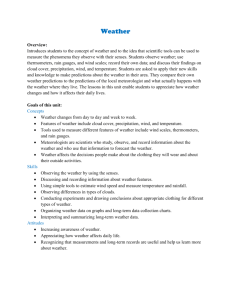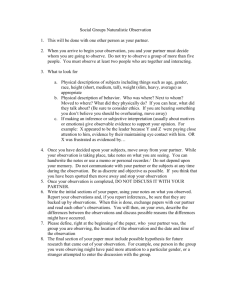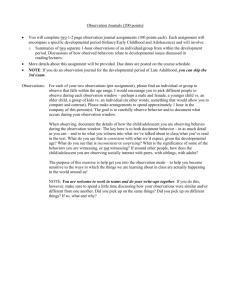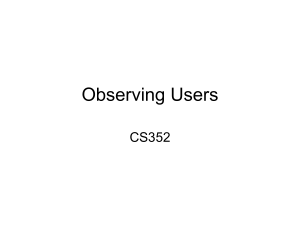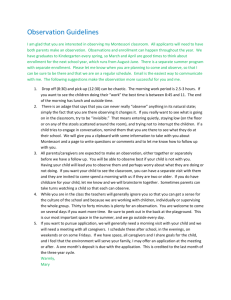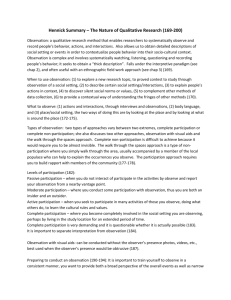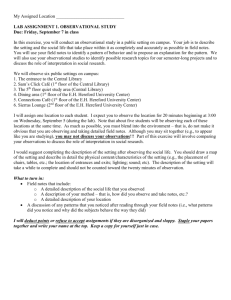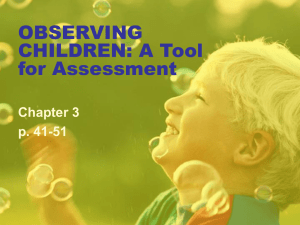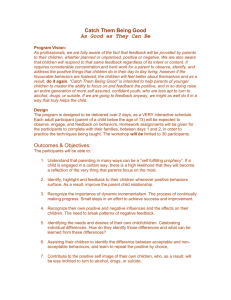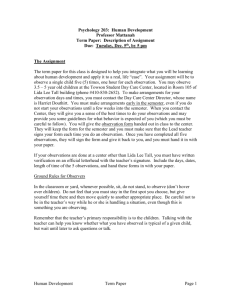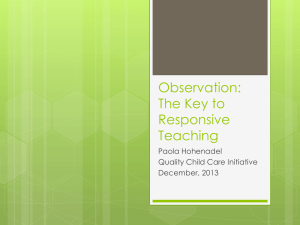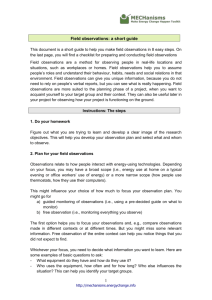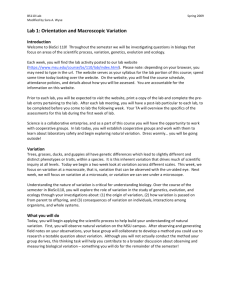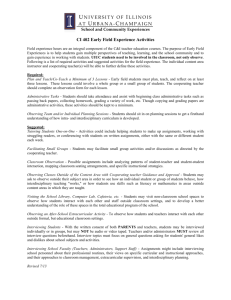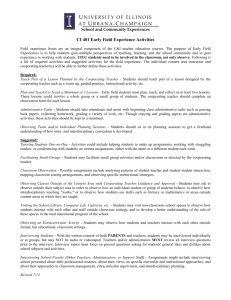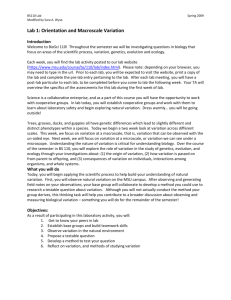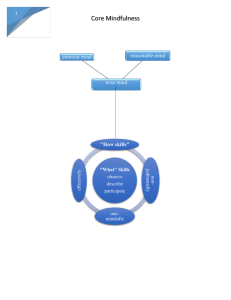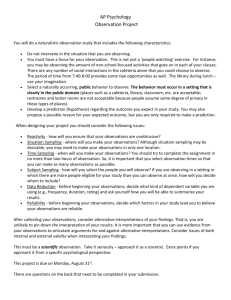Observation
advertisement
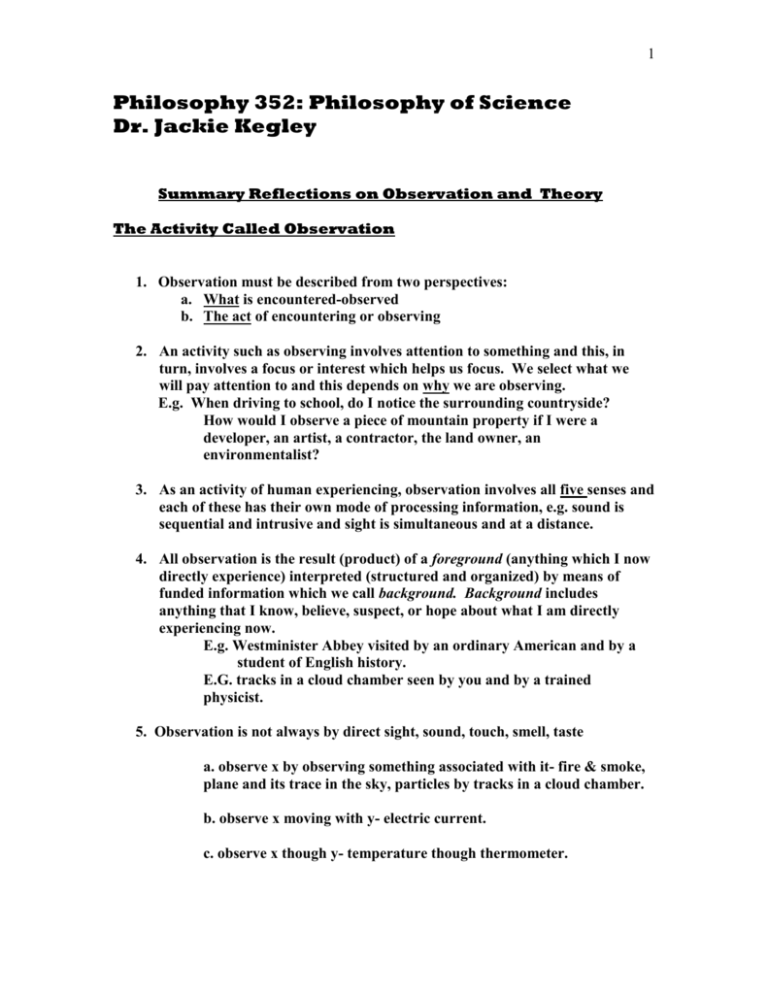
1 Philosophy 352: Philosophy of Science Dr. Jackie Kegley Summary Reflections on Observation and Theory The Activity Called Observation 1. Observation must be described from two perspectives: a. What is encountered-observed b. The act of encountering or observing 2. An activity such as observing involves attention to something and this, in turn, involves a focus or interest which helps us focus. We select what we will pay attention to and this depends on why we are observing. E.g. When driving to school, do I notice the surrounding countryside? How would I observe a piece of mountain property if I were a developer, an artist, a contractor, the land owner, an environmentalist? 3. As an activity of human experiencing, observation involves all five senses and each of these has their own mode of processing information, e.g. sound is sequential and intrusive and sight is simultaneous and at a distance. 4. All observation is the result (product) of a foreground (anything which I now directly experience) interpreted (structured and organized) by means of funded information which we call background. Background includes anything that I know, believe, suspect, or hope about what I am directly experiencing now. E.g. Westminister Abbey visited by an ordinary American and by a student of English history. E.G. tracks in a cloud chamber seen by you and by a trained physicist. 5. Observation is not always by direct sight, sound, touch, smell, taste a. observe x by observing something associated with it- fire & smoke, plane and its trace in the sky, particles by tracks in a cloud chamber. b. observe x moving with y- electric current. c. observe x though y- temperature though thermometer. 2 d. vast expansion of the senses through various scientific instruments, all of which are based on theoretical assumptions about the instrument and what is allows us to observe –electron microscope, carbon dating, Wilson cloud chamber, Geiger counter. 6. There is as very distinct possibility that our very observing of things may somehow change that which is being observed—e.g. staining of microscopic samples, use of electron instruments, the two aspects of sub-atomic particles as wave and particle depending on how observed. 7. Observation and theory cannot be sharply distinguished because in science theory helps direct observation and experimentation by a) Specifying the nature of things looked for, its properties, etc. b) Specifying the technique to be used for determining its presence. c) Bringing assumptions about things worth looking for and research worth doing. d. Bringing assumptions about what exists and about the nature of the Universe, e.g., Newtonian absolute space and time; matter in motion. 8. The idea of neutral observation and the possibility of connecting theoretical terms strictly to observation vocabulary may well be a myth.
